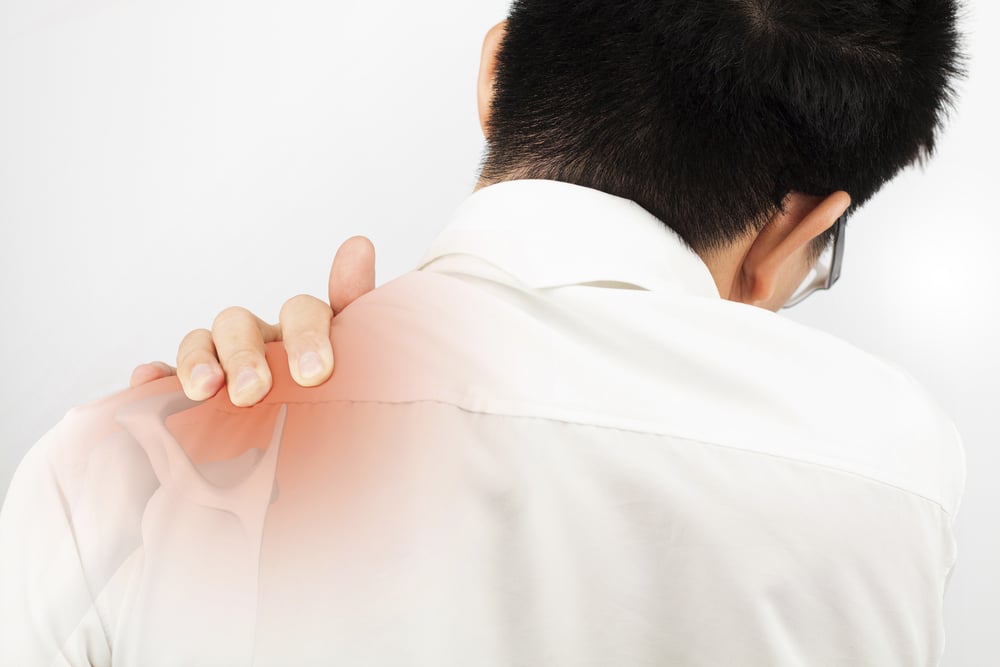
Hip Flexor Pain
Understanding Hip Flexor Pain: The Causes and Symptoms of Aching Hip Flexors
Did you know that the average American adult spends up to 6.5 hours a day sitting?
For teens, that number is even higher. On average, teenagers ages 12-19 spend about eight hours a day sitting. This position keeps our hip flexor muscles flexed constantly, and rarely leaves room for extension of the hip flexor.
This fact could be one of several reasons for hip flexor pain in a wide range of people, both young and old. Hip flexor pain also commonly occurs in people with less sedentary lifestyles who remain more physically active.
If you’re experiencing pain or strain in this region, you’re likely wondering why. How can you relieve this aching feeling? What can you do to combat it?
We answer all this and more below.
Causes and Symptoms of Hip Flexor Pain
The hip flexors, located near the groin/inner thigh area, can cause noticeable pain that disrupts many day-to-day activities.
Hip flexor pain is most often caused by people who overuse their hip flexors—in particular, athletes. If you’re actively using your hip flexors (for example, if you’re a runner), you may notice pain there more often than those who don’t use them.
Some common symptoms of hip flexor pain include:
- Muscle pain, which can be present at all times, or in specific movements, like when bringing the knee up towards the chest (for example, walking upstairs)
- Muscle spasms
- Decreased mobility
- Acute achiness
Often, people change the way they walk to compensate for pain on one side, which can cause limping or various issues with the side they’re now leaning on for support.
These symptoms can range from mild and annoying to severe and debilitating.
How to Stretch and Strengthen the Hip Flexor
If you’re noticing pain while the hip is flexed, you can combat it by allowing the muscles to extend instead. This opposite motion allows your hip and inner thigh muscles to lengthen.
You can try various exercises and yoga poses to achieve this, such as:
- High or low lunges
- Pigeon pose
- Three-legged dog pose (raising one leg high, extending through the spine, from a downward dog)
- Gate pose (essentially, a kneeling side bend)
- Reclined pigeon pose (an ideal posture for those with especially tight hips)
- Bound angle pose, commonly called diamond or butterfly
Postures like bridge pose can not only lengthen but also help to strengthen the hip flexor muscles.
How to Treat Hip Flexor Strain
Other than stretching and lengthening through the hip flexor muscles, you can also allow your body some rest time. If you’re an active person, perhaps you include more recovery days into your routine.
Chiropractors can also help treat hip flexor pain and strain.
They can achieve this by identifying the cause or root of the problem and then through assisted stretching, ensuring the proper alignment. Improper alignment while stretching may cause more strain, but a professional can ensure you’re doing things correctly.
Chiropractors can also determine if the pain is coming from somewhere else, such as the pelvis.
Stay Hip Healthy
Now that you know some common causes of hip flexor pain, as well as solutions, you can begin to get some much-needed relief.
We at Amazing Life Chiropractic and Wellness can help you feel even better with personalized treatments to restore flexibility and mobility.
New patients, click here to begin the appointment process. We can’t wait to help you get your life back!





